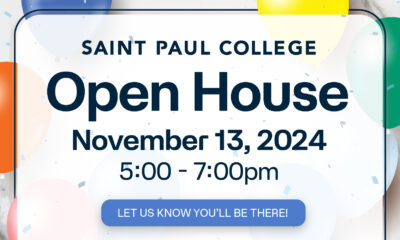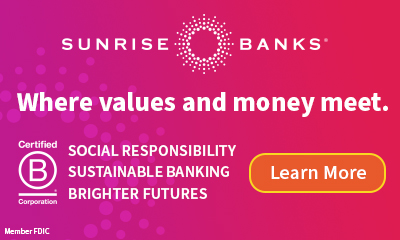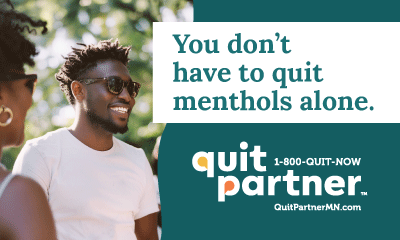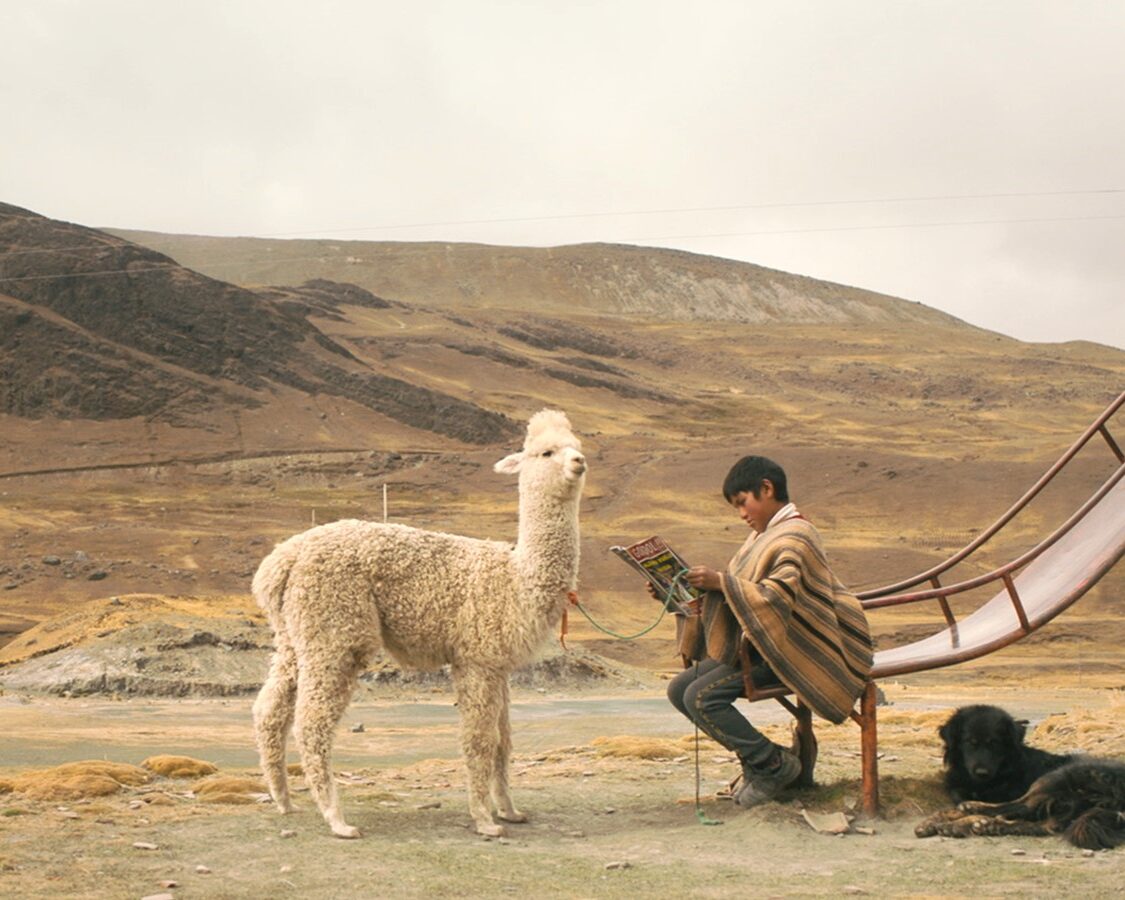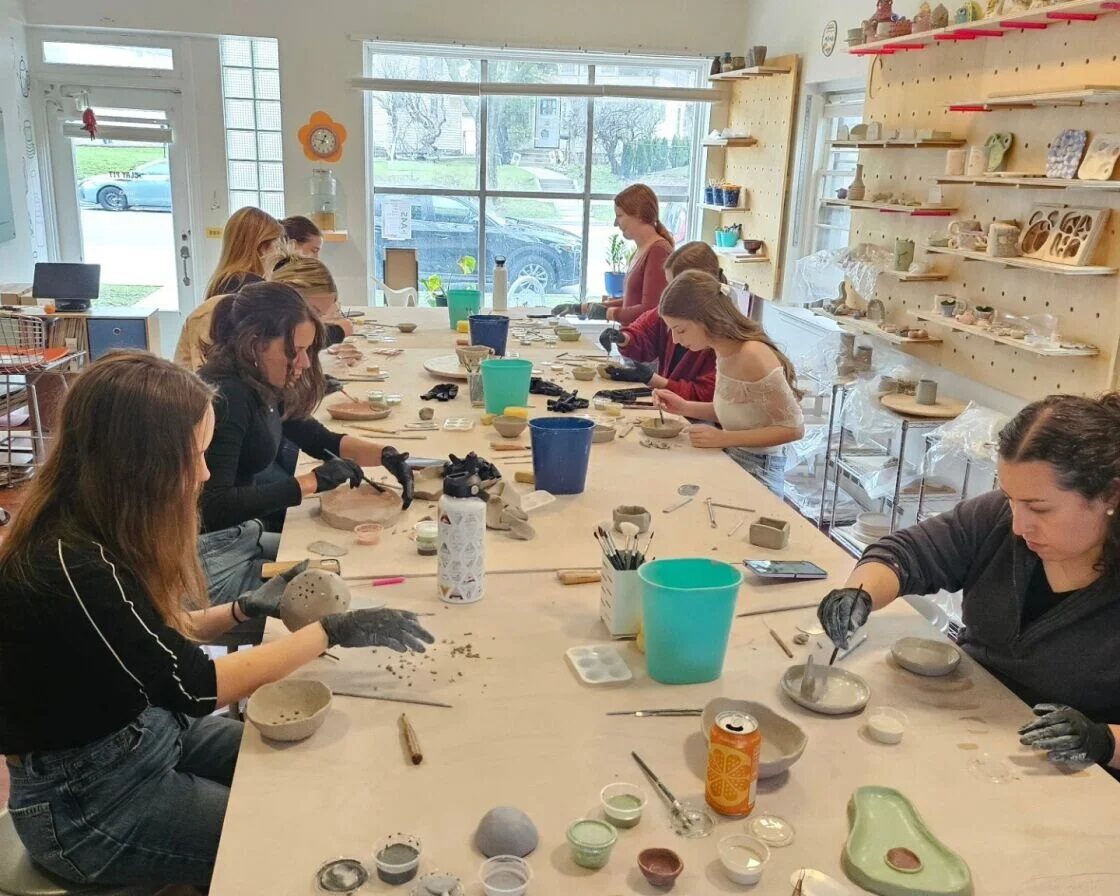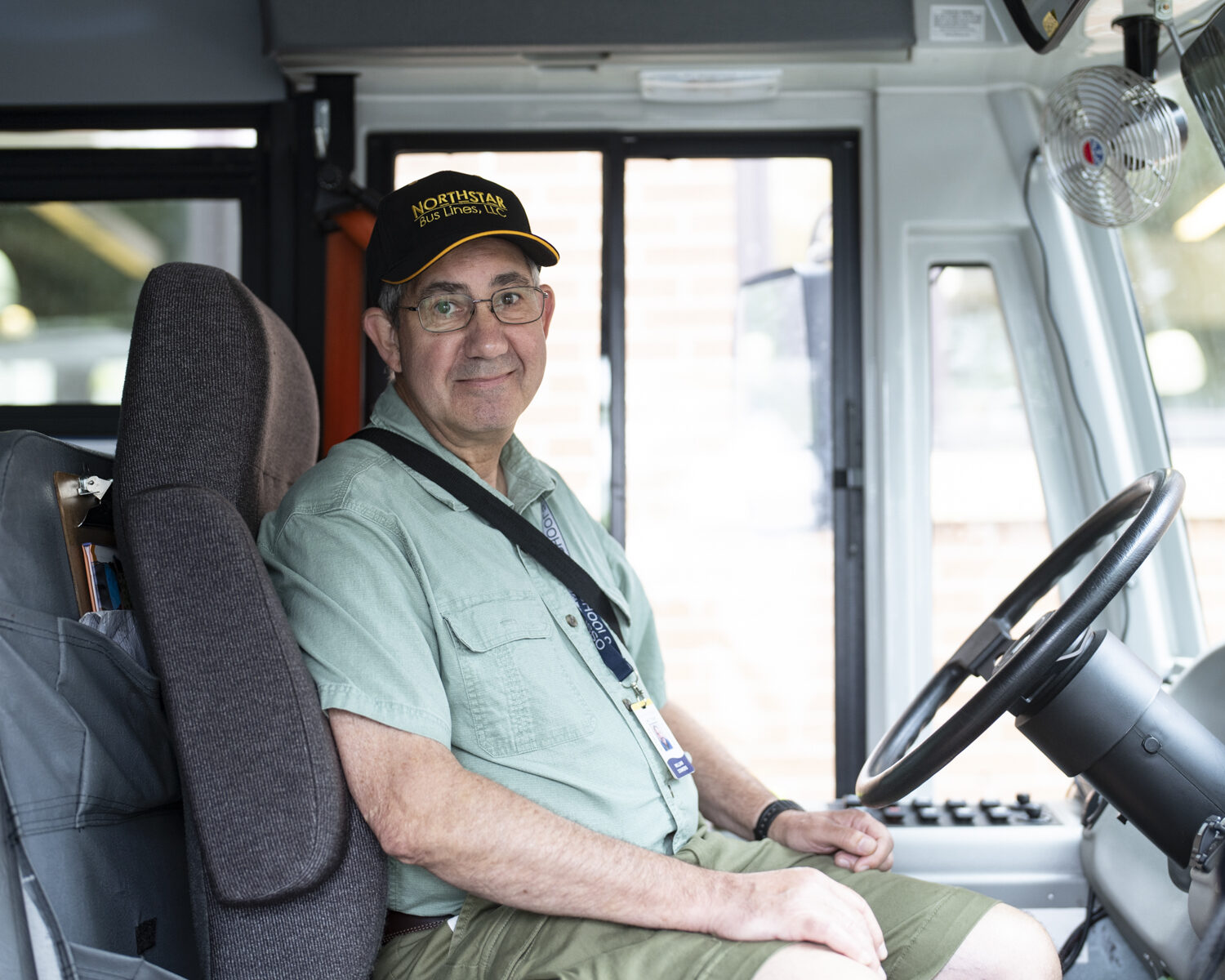BY ELAINE KLAASSEN
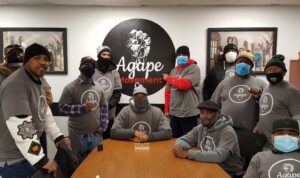
Agape members preparing to go out on the street to provide security. Standing from left to right: Abdirizak Abdi, Yusuf, Marquise Bowie, Rico Smith, George Coles, DeAndre Dent, Derek Armstrong, Reggie Ferguson, Casanova Richardson. At the table from left to right: Steve Floyd, Larry Dent.
If you go to 38th and Chicago, the corner where George Perry Floyd Jr. was killed by a Minneapolis police officer kneeling on his neck, you will see that the people have claimed the intersection as a free state, an autonomous zone of nonviolence and anti-racism. They have closed it to traffic, and a sculpted fist now stands there, a symbol of unity and solidarity. It means “We’re here, we stand together,” said one young activist. It is popularly known as George Floyd Square.
From what I understand, and the reason I support GFS, is that the closed intersection is an ongoing reminder of what happened there; it’s a continuing statement that George Floyd MUST NOT BE just one more in a long line of victims of police brutality; it begs for Floyd’s death to be the historical turning point when racism and police brutality come to an end; and it presents a model of non-hierarchical community.
Community members meet in a circle twice a day. During the winter, logs burn in metal containers. Artwork and poetry are everywhere. Someone tends living plants in a greenhouse. A free clinic, 612 MASH, is available, and Black-owned businesses hang on by a thread. At the corner of 37th and Chicago, Harrison, the owner of Dollar & Up, says he wants to be there for the community and help with job training for youth. Delicious food can be found at three restaurants: Dragon Wok, Just Turkey and Smoke in the Pit. There are many free food distributions and free meals served as well. Conflict resolution and nonviolence are the order of the day. On Feb. 21, they commemorated Malcolm X’s work for Black empowerment and his assassination on Feb. 21, 1965.
A strong component of George Floyd Square is a nonprofit called Agape—unconditional love—made up of young Black men and women, some Christian, some Muslim, some non-religious, who all believe in love. They help local youth with jobs, education, mental health and trauma, and basically simply love everybody. Their presence provides security at the square. When strangers wandering in start stuff or when kids come in there up to no good, Agape is there to de-escalate conflicts and difficult situations. It happens daily, they said. An Agape co-founder, Reggie, calls this work “verbal judo.”
Agape’s small building, with a couple of offices and various meeting rooms a few doors down from Cup Foods, also has a meditation room, since the kind of work they do requires a lot of prayer and meditation. Another co-founder, Marquise, spends all his time at George Floyd Square/Agape, except when he’s working at his job, sleeping or volunteering elsewhere—nurturing younger guys in sports or reading or life skills. He says it’s so important to care for children and young people because “the mind is like jello—you put everything in before it settles.”
As people go in and out of the Agape house, it feels like a family. In fact, many of them have known each other since childhood and are also related. When I introduced myself as “Elaine,” I would hear, “My favorite aunt is named Elaine,” and “My mom is Elaine,” or “Elaine, that’s my mother-in-law.” Of course, they were all talking about the same person. Nothing could have painted a better picture of how intertwined they are.
In the first days after George Floyd’s death, as people from the neighborhood poured out into the streets, everyone was traumatized and they were all looking for healing from the state’s assault on their lives. The city was on fire.
From the beginning there was a natural consensus to start daily meetings to figure out what to do. Already crazed from the pandemic, neighbors, no longer strangers if they had been before, automatically moved out to the corner of 38th and Chicago and set up tables with canopies. People started bringing stuff to donate and people started coming to collect things they needed. From the first days of spontaneous action, Marquise and his childhood friends Reggie and Alfonzo knew even more action was required. They all knew about Steve Floyd (no relation to George) and his Agape work with youth, gang prevention and nonviolence, and together they came to the conclusion that “we needed Steve.” Agape was what was needed.
Marquise had heard Floyd speak about agape, unconditional love, at his junior high school, in 1989, and that moment had become pivotal in his life, even though between then and now, as he struggled along in survival mode, he did things “opposite of love,” he said.
He had some scrapes with the law and spent some time in a federal prison camp, but he said that’s where he learned the patience he now applies to de-escalation work. During his ups and downs since that junior high assembly, he had kept in touch, off and on, with Steve Floyd.
Within a couple of days, Floyd, who is also a professional photographer (and who had recently recovered from a kidney transplant), was at George Floyd Square taking pictures. The three friends asked him about becoming Agape. He said if they were doing great work during the day and then “doing garbage at night” it wasn’t OK. But if they were serious, he was all for it. Now he’s like their guide/mentor/consultant/partner/advisor, etc., and is very involved. (See more about the original Agape here: www.theagapemovement.com)
One of the first things the new Agape did was frightening but successful. They were coming from their first session of nonviolence trainings when they got a phone call that there was trouble downtown—not even the area they were watching over. But they went anyway.
A Black man had shot himself as he was interacting with police. Because of general anger toward the police, protesters believed the police had killed the man.
It was a rainy day. The Agape people parked a ways away and walked to Block E. There were other peace-oriented groups there as well, such as Mad Dads.
Marquise said there was a police standoff with the young people who, “due to what they thought, were throwing stuff, yelling. They were fed up with injustice.” Agape formed a buffer—they put their bodies between the rows of young people and the line of police facing them—and gradually were able to help inch the young people from the scene and keep them separated from the police.
Generally, the police don’t go into George Floyd Square unless they are called. Agape is not opposed to a police force. But they prefer not to call the police “unless human life is in jeopardy,” as Bridgette from Agape put it. Any kind of nonviolent incident such as a drug overdose or passing a fake 20-dollar-bill hopefully could be resolved without police involvement and certainly doesn’t call for police aggression, they believe.
Community safety mainly has to do with looking out for each other. Bridgette is proud to point out that there is less violent crime in GFS than in North Minneapolis or St. Paul. The shooting on Saturday, March 6, was an exception. Once in a while, tragically, there are things you can’t control. Marquise remembers last summer sitting out in the square playing chess, with little kids running around. He grew up in this neighborhood, living in various places along Portland, Chicago, Columbus, and he “never saw this before.” Since Saturday, he continues to feel that GFS is a safe place.
GFS has been a haven, a respite, for many people of color, as well as a chance for many, many young people to pursue an ideal—a new way for people to be community.
The City of Minneapolis plans to leave GFS as it is until after the trial. Marquise said he believes the city wants to open up the intersection in cooperation with GFS rather than by force.
Whatever happens, Agape plans to carry on with its nurture of young people and its nonviolence and de-escalation work. As they say, “Love is the most powerful force.”


